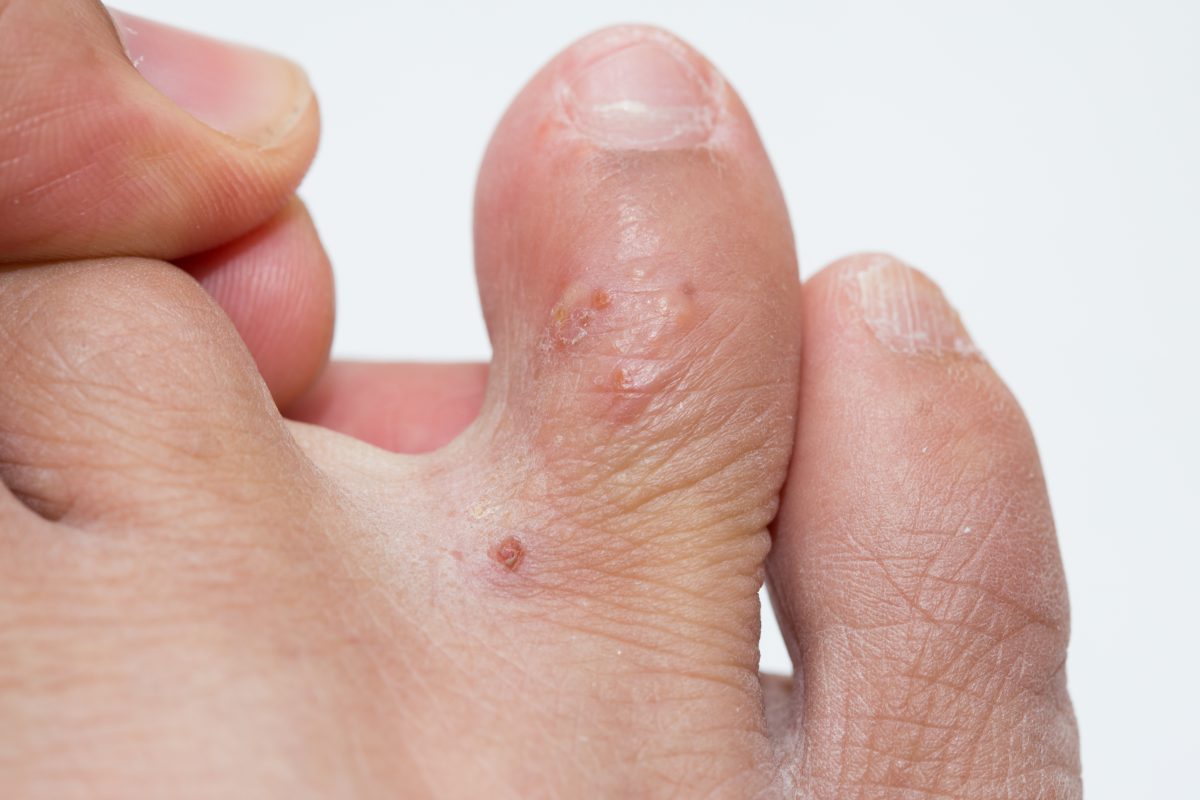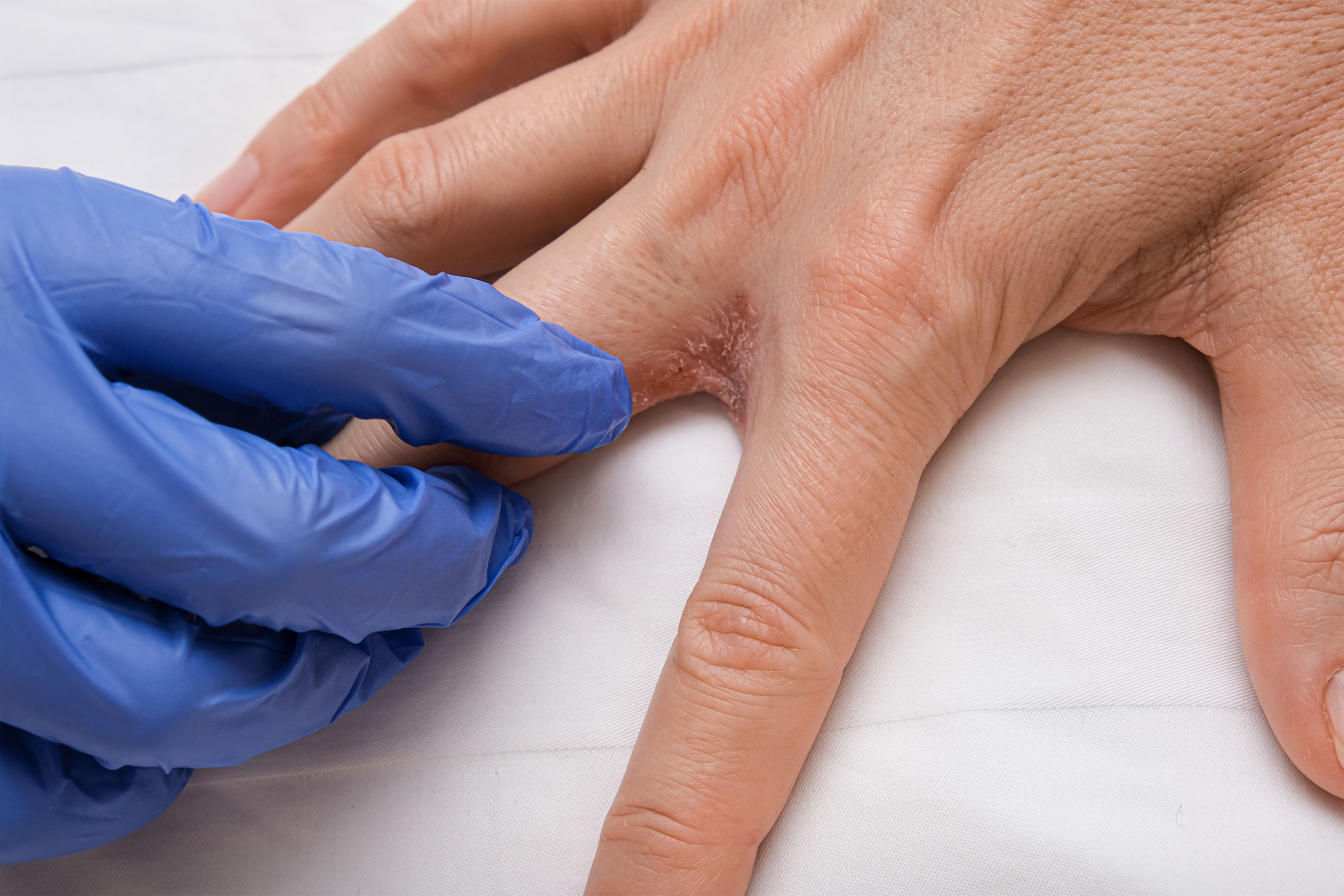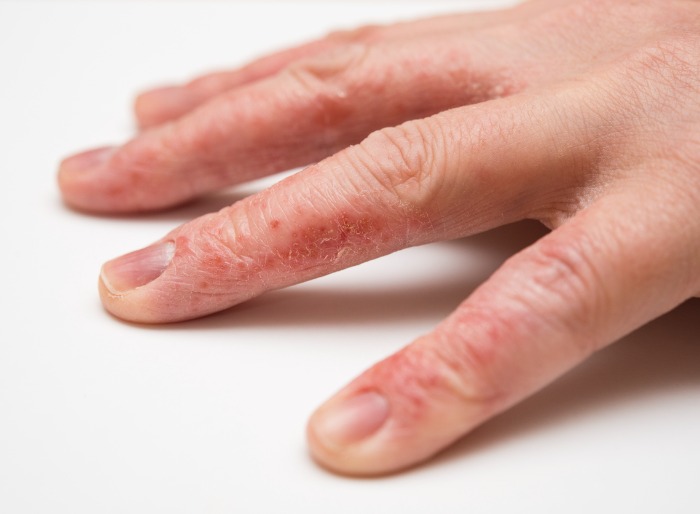Have you ever noticed small, painful red bumps appearing on your hands, fingers, feet, or toes? These could be more than just a temporary irritation or allergic reaction. They might be a symptom of a skin condition called dyshidrotic eczema. Often misunderstood and misdiagnosed, dyshidrotic eczema is a chronic condition that can significantly impact your daily life if left untreated. This article will explore the causes, symptoms, treatment options, and prevention strategies for dyshidrotic eczema to help you better understand this skin condition.
What is Dyshidrotic Eczema?

Dyshidrotic eczema, also known as pompholyx, is a form of eczema that primarily affects the hands and feet. It is characterized by the sudden onset of small, itchy, and often painful blisters. These blisters typically appear on the sides of fingers, palms of the hands, and soles of the feet. While the exact cause is not fully understood, it is believed to be linked to genetic factors, environmental triggers, and individual sensitivities.
Symptoms of Dyshidrotic Eczema
The symptoms of dyshidrotic eczema can vary from mild to severe. Common signs include:
- Small Blisters: Tiny, fluid-filled blisters that cluster together on the hands or feet.
- Redness and Inflammation: The skin surrounding the blisters may become red, swollen, and irritated.
- Intense Itching: The itching can be relentless and is often the most distressing symptom.
- Painful Cracks and Peeling: As the blisters dry out, the skin may crack, peel, and become painful.
- Thickened Skin: Repeated flare-ups can lead to thickened, hardened skin over time.
If left untreated, these symptoms can interfere with daily activities like typing, writing, walking, or even holding objects.
Common Causes and Triggers

While the exact cause of dyshidrotic eczema remains unknown, several factors are known to trigger or worsen symptoms:
- Allergens and Irritants: Contact with certain chemicals, metals (like nickel and cobalt), or fragrances can trigger flare-ups.
- Stress: Emotional stress is a common factor that can exacerbate symptoms.
- Weather Conditions: Hot and humid or cold and dry weather can lead to flare-ups.
- Sweat: Excessive sweating or moisture trapped on the skin can trigger symptoms.
- Genetics: A family history of eczema or other allergic conditions may increase the likelihood of developing dyshidrotic eczema.
- Immune System Responses: An overactive immune system can lead to inflammation and skin reactions.
Diagnosis of Dyshidrotic Eczema

Diagnosing dyshidrotic eczema typically involves a physical examination of the affected areas. Dermatologists may ask about your medical history, symptoms, and potential triggers. In some cases, they may recommend patch testing to identify any specific allergens that may be contributing to the condition. It’s important to rule out other conditions, such as fungal infections or psoriasis, that may present with similar symptoms.
Treatment Options
Although there is no permanent cure for dyshidrotic eczema, various treatments can help manage and alleviate symptoms:
1. Topical Steroids
Corticosteroid creams and ointments are often the first line of treatment. They reduce inflammation, redness, and itching, helping to clear up blisters more quickly.
2. Moisturizers
Regular use of thick, fragrance-free moisturizers can prevent the skin from drying out and reduce flare-ups. Look for products containing ceramides, which help repair the skin’s barrier.
3. Antihistamines
Over-the-counter or prescription antihistamines can help alleviate itching and improve sleep during severe flare-ups.
4. Phototherapy
In cases of chronic dyshidrotic eczema, phototherapy (light therapy) may be recommended. This treatment uses controlled exposure to ultraviolet light to reduce inflammation and improve symptoms.
5. Immune-Modulating Medications
For severe or resistant cases, oral or injectable medications that target the immune system may be prescribed, such as methotrexate or biologics.
6. Avoidance of Triggers
Identifying and avoiding specific triggers, such as allergens or irritants, is crucial in preventing flare-ups.
Home Remedies for Relief
In addition to medical treatments, certain home remedies may provide relief:
- Cool Compresses: Applying a cold, damp cloth to the affected areas can reduce itching and swelling.
- Oatmeal Baths: Soaking in a colloidal oatmeal bath can soothe irritated skin.
- Aloe Vera: The cooling and anti-inflammatory properties of aloe vera can help alleviate discomfort.
- Protective Gloves: Wearing gloves while doing household chores can prevent exposure to irritants.
- Proper Hygiene: Keep your hands and feet clean and dry to minimize irritation and infection risk.
Prevention Strategies

Preventing dyshidrotic eczema flare-ups often involves lifestyle adjustments:
- Stay Hydrated: Drink plenty of water to keep your skin hydrated.
- Use Gentle Products: Avoid harsh soaps, detergents, and skincare products with fragrances or dyes.
- Manage Stress: Practice stress-reduction techniques like meditation, yoga, or deep breathing.
- Wear Breathable Fabrics: Choose cotton or moisture-wicking fabrics to reduce sweating.
- Avoid Known Allergens: Be mindful of metals like nickel in jewelry and cobalt in certain products.
- Regular Moisturization: Apply emollient-rich creams daily to maintain the skin’s barrier.
When to See a Doctor
If you experience persistent symptoms or if over-the-counter treatments do not provide relief, it’s time to consult a dermatologist. Seek medical attention if you notice signs of infection, such as increased redness, warmth, pus, or fever, as untreated infections can worsen the condition.
Conclusion
Dyshidrotic eczema may be a challenging condition to manage, but with proper care, treatment, and preventative measures, you can keep flare-ups under control and improve your quality of life. If you see painful red bumps on your hands or feet, don’t ignore them. Early diagnosis and treatment can make a significant difference in managing this chronic condition effectively.
Remember, healthy skin begins with awareness and proactive care. By understanding dyshidrotic eczema and taking steps to manage it, you can lead a more comfortable and confident life.
